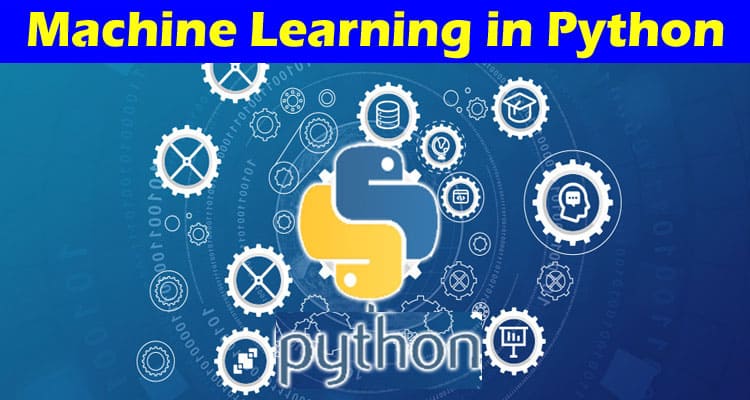What is machine learning in python? The Python language is widely used for Machine Learning projects. Many different techniques can be used to create these applications. Some of the most popular is the support vector machine and unsupervised learning. If you are new to Python, it can be difficult to understand how these techniques work. This article will introduce both of these techniques and give you some information on how to get started with them.
Unsupervised learning vs. support-vector machine
Support Vector Machine (SVM) is a machine learning model used for text classification, image classification, and regression problems. Its goal is to identify the best line to separate classes of data. The model requires a labeled training set of data.
SVM can be used with both linear and non-linear data. Linear data can be separated by a single straight line, while non-linear data may require clustering algorithms.
Typical uses for the SVM algorithm include text categorization, face detection, and image classification. They are robust, scalable, and fast. However, they have some limitations when dealing with complex data.
SVM models are sensitive to parameter choice. This means that it is essential to perform research before using the algorithm. Besides, it is also possible to find more efficient solutions to support vector machines by using logistic regression.
Unlike supervised learning, which requires a labeled data set, unsupervised learning tries to uncover hidden patterns in unlabeled data. The algorithm can identify these hidden patterns, which are then used to learn from the data.
Support Vector Machines are scalable, but they have some shortcomings. If there are fewer decision boundaries, they may perform better than supervised models. But they are helpful for classification problems, especially when working with text.
When an SVM is working on a complex data set, it can have trouble. Using a supervised model can help to solve this problem. There are several packages available for supporting SVM models. LibSVM and Scikit-learn can be helpful.
In the past, weights were often used to interpret SVM models. However, permutation tests can be a good way to solve SVM models. Permutation tests based on the consequences of the SVM model are critical in biological sciences.
Hidden layers
Hidden layers are a remote part of your image that plays a significant role in decoding your image. They allow your neural network to handle more complex functions. There are many different ways to set up your hidden layer.
The most common method is the weight sum technique. This technique uses the summation of all of your inputs divided by the amount of bias you want to be assigned to each one. It can be done randomly or by backpropagation.
For example, if you train a neural network to detect a person’s face, you may use a convolutional or fully connected hidden layer. You can think of a hidden layer as an approximate continuous mapping.
For most machine learning tasks, one hidden layer is more than enough. If you want to go even deeper, you can add additional hidden layers to learn more complex representations of your data.
The best part is the number of hidden layers you need will depend on the problem you’re trying to solve. Some problems have yet to be obvious solutions. Others, like face recognition, are better handled with more layers.
Hidden layers in machine learning can be used to train your neural network to perform more complex functions. A good rule of thumb is that each layer should contain about the same number of neurons. Too few neurons or too many will result in overfitting.
In the end, the size of your network is less important than the number of layers. Many functions need to be simpler for a single, one-hidden-layer MLP. However, it is essential to remember that a hidden layer is just an intermediary between your input and output.
When you’re done building your neural network, you can begin using it to recognize objects, text, and faces.
Getting started
Thanks to its plethora of libraries and features, getting started with machine learning in Python is not a hard task. Its simplicity makes it an ideal choice for beginners and experienced developers alike.
Having a good grasp of the basics helps you navigate the rest of the course. You’ll be introduced to the most important concepts of machine learning, such as classification techniques and supervised and unsupervised learning. In addition, you’ll get hands-on practice with a variety of machine-learning tools.
The most impressive feature of the Python language is its versatility. It allows you to adapt your code to almost any problem easily. As a result, you can focus on your creative side instead of spending time trying to write code for a particular problem.
If you’re interested in learning more about machine learning in Python, consider taking a course or two. These will show you the best practices and help you build a solid foundation for your future career. There are several popular options, including CFI’s Machine Learning for Finance – Python Fundamentals course and FreeCodeCamp’s Machine Learning with Scikit-Learn course.
Another excellent resource for machine learning in Python is the Theano library. This Python-based tool will make advanced mathematical operations much more efficient.
Aside from being easy to use, it also has a nice UI. The site is also full of tutorials and documentation; you can even download a free version to start.
While at it, look into using the right machine-learning tool for the job. One option is to purchase a complete package, including the most popular library for machine learning.
Also Read: Technology and the Society 2022 – Its Facts and Controversy


